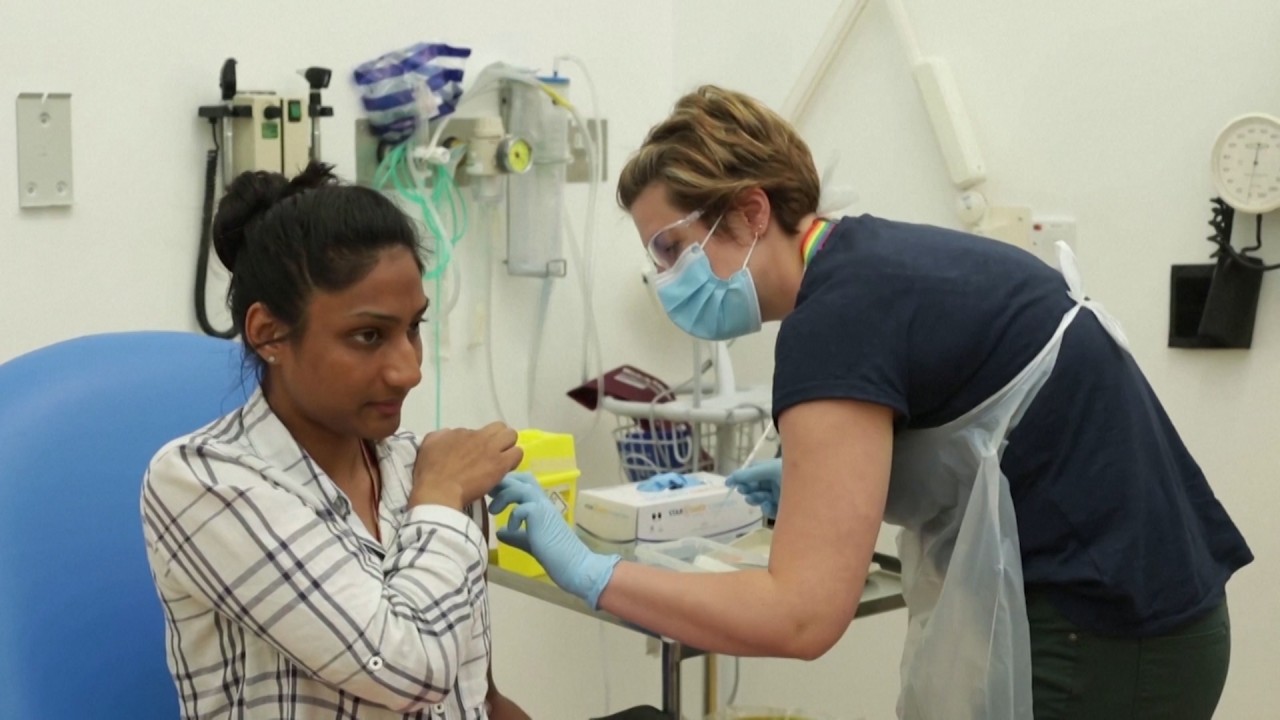
Coronavirus tests could be done faster using Chinese researchers’ new technique, US university says
- There is significant room to speed up coronavirus testing, Virginia Tech says after Chinese-led work on biosensing
- Method allows sample droplets to be ready for testing within minutes, whereas that takes hours during swab testing
The new approach – developed by researchers at Virginia Tech and known as biosensing – could allow test results to be obtained within minutes of taking samples, the university claimed, as health officials and scientists continue to seek fast and accurate detection of the disease.
The mainstream tests used so far to detect Sars-CoV-2, the coronavirus that causes Covid-19, are either nucleic acid swab tests, which detect fragments of virus genes, or antibody tests showing whether a person has been infected.
But swab testing, the prevailing method, often takes more than a day because of the laboratory procedures needed to amplify the presence of genetic materials for detection. Early this month, China asked its medical institutions to cut the turnaround time to within six hours for fever clinic patients, and within 24 hours for people taking a test voluntarily.

01:55
Scientists at Oxford University share promising news on coronavirus vaccine trials
There are also commercially available home test kits that look for traces of proteins associated with the coronavirus, or antigen tests, which could deliver cheap and fast results but with varying accuracy.
The Virginia Tech researchers did not mention the prospective application of the new technique in their original paper. But in a subsequent press release, Virginia Tech discussed its potential significance for coronavirus testing, adding that the researchers were seeking funding from the US National Institutes for Health to deliver the method for wider use.
Led by Cheng Jiangtao and Zhou Wei, the researchers used a laser beam to generate fingerprint light signals of samples’ molecules. Such signals could be compared with, for example, those of the coronavirus to determine its presence in a sample, the Virginia Tech press release said.
Published late last month in the peer-reviewed journal ACS Nano, the researchers’ report said that the new approach provided “an agile and facile avenue” to overcome the limit for “fast and ultra-sensitive detection” of droplets from the samples.

01:54
Tests on nearly 10 million people in Chinese city of Wuhan turn up only 300 coronavirus cases
In preparing the samples for comparison, the researchers developed special techniques to condense them, including the use of a special coating on the testing surface to control specimen droplets’ movement and shape to be ready for analysis in a matter of minutes.
The statement by Virginia Tech said the new method could help detect a virus even if the viral load was low.
“There’s significant room to improve the pace of coronavirus testing, Cheng and Zhou have found,” the statement said. “The amount of virus in a sampling (using the current methods) is also subject to error, and patients who have had the virus for a shorter period of time may test negative because there is not enough of the virus present to trigger a positive result.
“In Cheng and Zhou’s method, all of the contents of a sampling droplet can be detected, and there is no extraction or other tedious procedures … drastically reducing the error margin and giving a clear picture of the materials present.”

